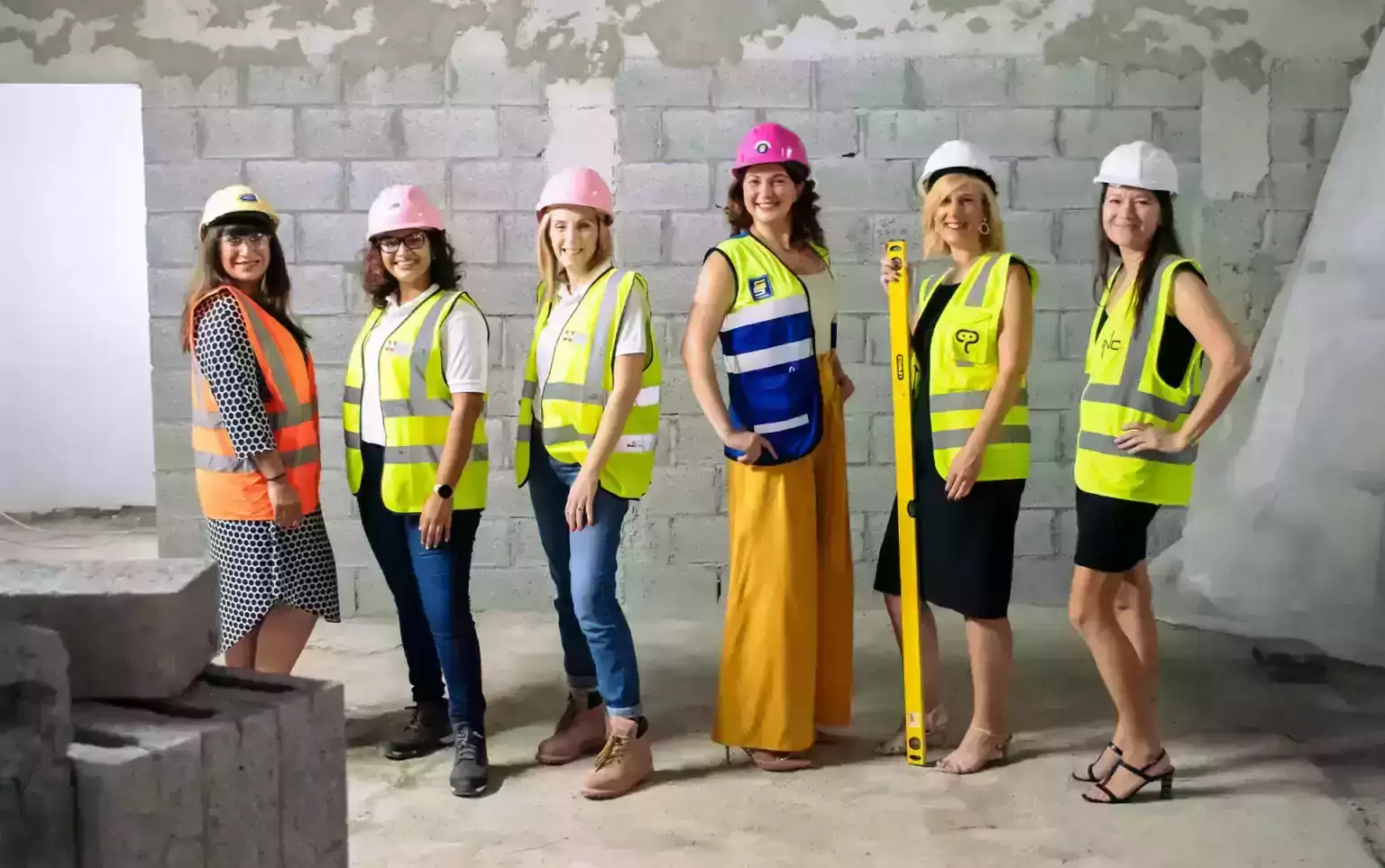The role of women in the construction industry
Women have faced challenges in the construction industry for centuries – from a lack of recognition to a lack of resources.
Despite these challenges, many women have been able to break down barriers and lead the construction.
As Women in Construction paves the way for the future, we must recognize their challenges and successes.
In this article, we will delve into the unique issues that Women in Construction face,
the benefits of having more women involved in the industry,
and strategies to encourage more women in this field.
We will also explore how to create a positive workplace culture, provide education and training,
and provide financial incentives to support women in the construction sector.

An overview of the role of women in the construction industry
Women in Construction has always been fighting against the odds to gain an equal footing in the industry.
For generations, the construction industry has been so dominated by men that the phrase “men at work” is often used to refer to the industry.
Despite this, the percentage of women working in the construction sector is on the rise.
The latest data showed that more than 10% of workers in this sector are women.
The inclusion of women in the industry is largely due to campaigns outlined by organizations
such as the Women in Construction Forum,
and part of the Construction Industry Association, the Women in Construction Network.
This independent body puts pressure on women in the field of construction.
These organizations have worked to raise awareness of the problem
and push for greater access to opportunities for women in the sector.
The efforts of these organizations have had a significant impact in recent years,
with many women-friendly initiatives being implemented in the construction industry.
Some of these include creating mentorship programs for women in the sector
and creating initiatives to provide better guidance on applying for and securing construction jobs.
Moreover, in recent years, many projects have been led by women,
such as the first building in the world to be entirely constructed and maintained by women.
Known as the Zawiya Project, the project was started in 2013 by a group of women in the northern Iraqi city of Sulaymaniyah.
It became a symbol of women’s empowerment and demonstrated the potential of women in the construction sector.
Clearly, there is still a long way to go for women to have equal opportunities in construction jobs and to be fully integrated into the sector.

Barriers faced by women in the construction industry
Despite making strides across all industries, women in the construction sector still face different barriers compared to their male counterparts.
One of the biggest challenges that women working in the construction sector must overcome is the need for more access to resources and training opportunities.
Many companies do not have a proven track record of success in recruiting,
retaining and training female employees, thus creating a gender gap in this field.
In addition, women often face gender bias and hostile work environments,
where they are overlooked for promotions and growth opportunities.
Despite these obstacles, the number of women entering the construction industry is increasing.
With the support of employers and the industry as a whole,
they have the potential to break down long-term barriers and build successful careers.

Benefits of women in the construction industry
There has been an increased demand for women in the construction industry
in recent years as organizations recognize the potential benefits women can bring.
These benefits include increased productivity, creativity and innovation, and improved communication and collaboration skills.
In addition, the presence of women in the construction industry contributes to greater workforce diversity
and cultivates a more inclusive environment.
This can lead to increased employee retention and satisfaction. in the end,
Having Women in Construction can have a positive impact on the industry,
creating more opportunities for both men and women.

Strategies to promote women in the construction industry
As the construction industry works to become more gender diverse,
several strategies can be used to encourage women to pursue construction careers and to promote an inclusive workplace.
First, it is critical to ensure that women are viewed openly and fairly for jobs in the construction industry.
And companies should focus on recruiting, hiring and promoting female candidates.
Furthermore, the language and images used online to attract job applicants must be more reflective of the diversity of the construction industry, including women.
Second, it is important to provide female employees with the same pay,
job opportunities, and resources as male employees.
Companies should strive to create equal pay structures for everyone, regardless of gender.
In addition, providing resources and programs that focus on helping female employees advance
in their roles can create a supportive environment for women in the construction sector.
Third, hiring a diverse team of mentors and mentors can help create an environment where women feel supported and respected.
Mentoring programs must be intentional in their efforts to direct support for women in construction and must be open to all genders.
In addition, supervisors must be trained to recognize and address sexism in the workplace and to create a culture of fairness and respect.
Finally, it is important to create a safe and secure environment in which to work.
All employees must be provided with appropriate training on preventing sexual harassment and assault,
and developing supportive personal relationships.
Furthermore, company policies must be in place to ensure that any instances of harassment
or discrimination are promptly reported and promptly investigated.
By taking these steps, the construction industry can work to create an industry in
which women can thrive and reach their full potential.
And by investing in strategies that create fairer and more supportive work environments,
The construction industry can become more inclusive and promote growth and success for all genders.

Create a positive workplace culture
Creating a positive culture in the workplace is essential to the success of women in the construction field.
As the construction industry becomes increasingly diverse,
companies must recognize the value of creating an inclusive and supportive culture.
This means giving women in construction the same respect and opportunity as men.
encourage their ideas and contributions, and provide resources to help them succeed.
Companies should also create a culture that includes opportunities for training and development,
fair compensation and recognition, and a safe and secure work environment.
Women in the construction industry must be allowed to thrive to break down the barriers that prevent them from achieving their full potential.
With the right environment and support, women in the construction sector can help shape a brighter future for the industry.

Providing education and training
It is integral to breaking down barriers and building a future for women in construction.
Expanding access to education and training for women in construction is essential to equip them
with the skills required for different roles in the industry.
By providing access to training, women can gain a foothold in the industry, enabling them to develop their understanding of the sector and its requirements, qualifications and capabilities.
Furthermore, providing education and training to those who previously could not access it can help foster a more diverse work environment in the industry.
Which brings more benefits to all involved.
By taking these steps, women in the construction industry can advance the current state of the field and set an example for future generations.
Holding women leaders accountable
The rise of “women in the construction industry” is a major step forward in the field of development;
However, the full potential of its impact has yet to be realized.
To close the gender gap, leaders in industry must take responsibility for empowering these women within their organizations
and setting guidelines to break down existing barriers.
This will require strong action from the higher levels of the organization.
A system must be put in place to ensure that women are provided with the resources and opportunities for professional growth and advancement.
Moreover, the higher levels of management are responsible for creating a safe and inclusive environment for them.

Provide financial incentives
Attracting women to the construction sector is one of the most important ways to ensure gender equality in the industry.
These incentives must be designed to recruit and retain qualified women in the workplace.
This can be achieved by providing financial assistance for training and education, increasing workers’ wages,
and offering incentives to those who stay in the labor force longer.
When considering Women in Construction incentives,
it is important to ensure that they are tailored to the needs of the specific population and industry.
For example, some incentives may target women in low-paying positions or focus specifically on encouraging more women to enter certain professions. Total,
Women in construction are making significant progress in the industry,
helping to break down barriers and advance gender equality.
From fighting for fair pay to attaining leadership positions,
women are making their voices heard and demonstrating the power of collaboration and hard work.
Women in the construction industry are no longer a rarity but a growing presence in the workplace and construction industry.
Moreover, women in the construction sector are paving the way for future generations of women to leave their mark in the industry.
With the continued dedication of female construction workers and the support of organizations and advocacy groups,
there is no limit to the growth and advancement of women in construction.
Women are proving themselves to be vital assets to the industry, helping to build a brighter future for all of us.
For more architectural news







